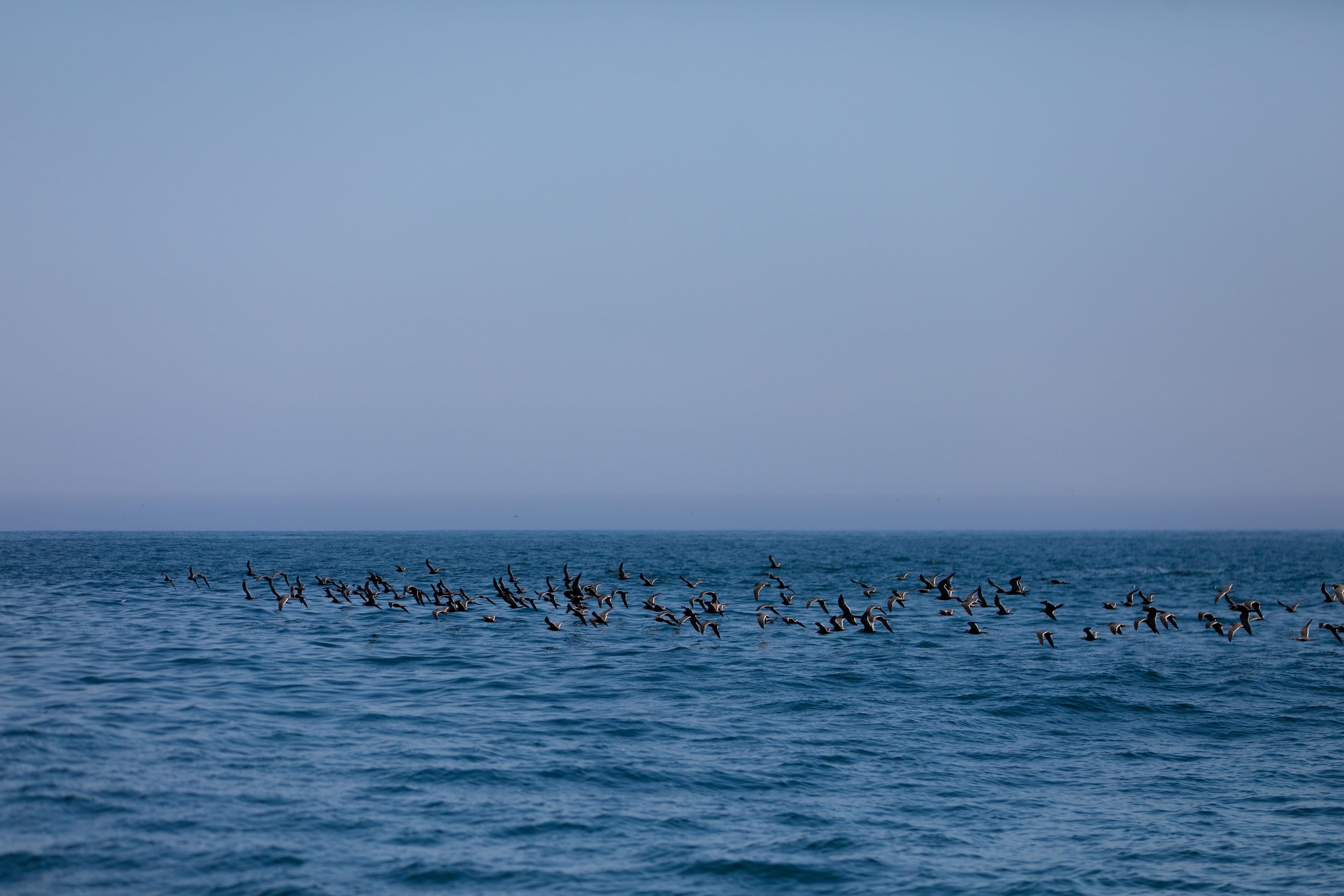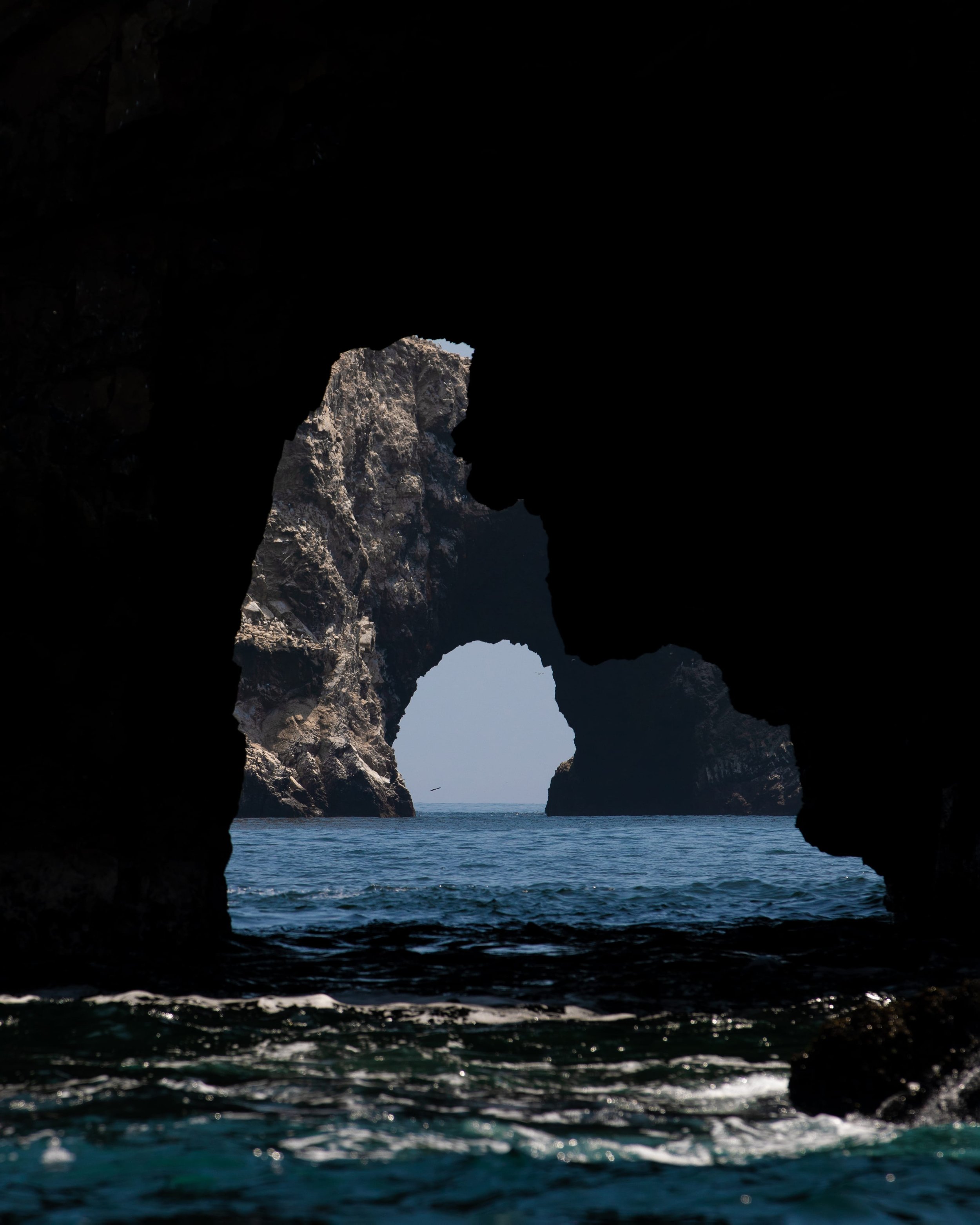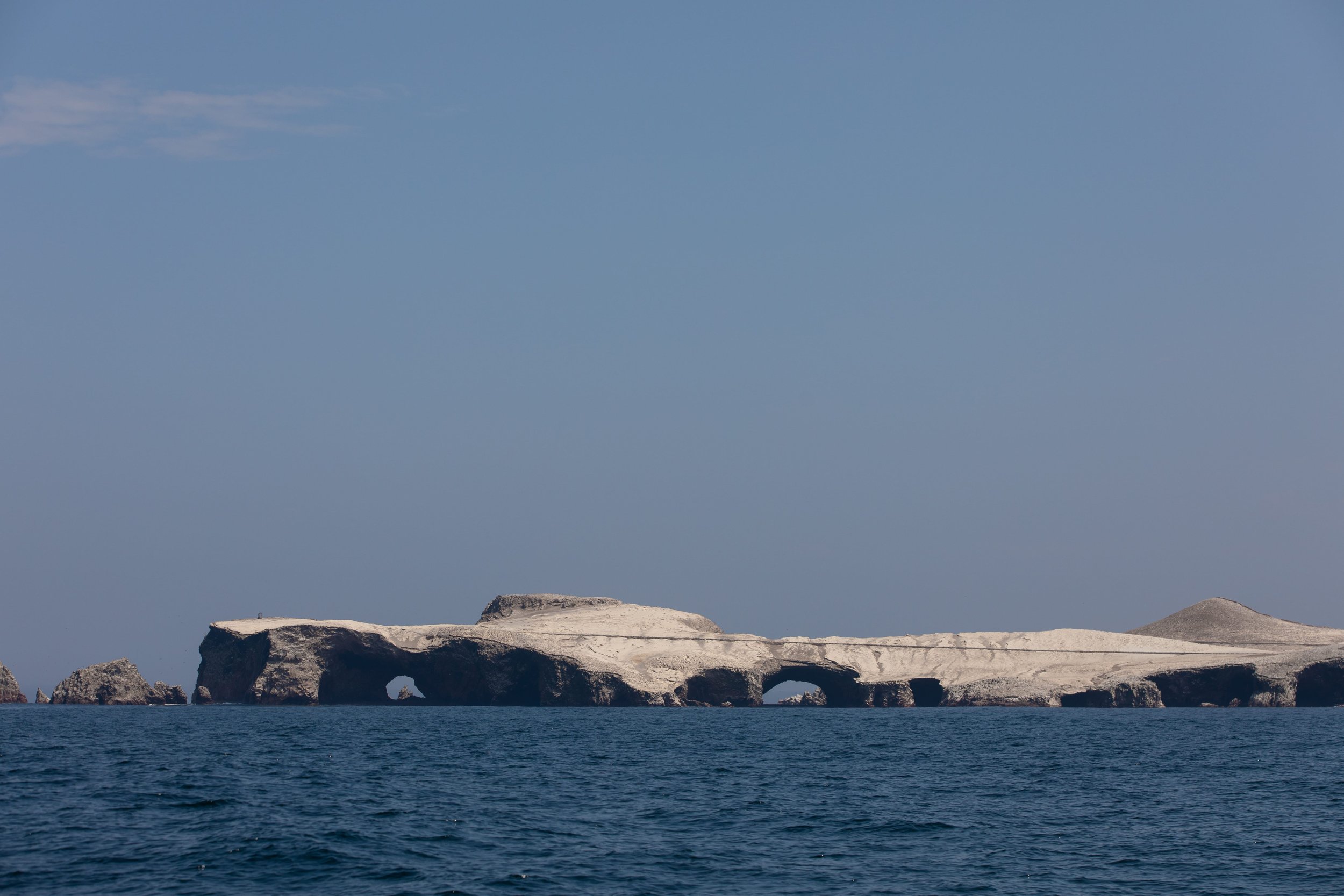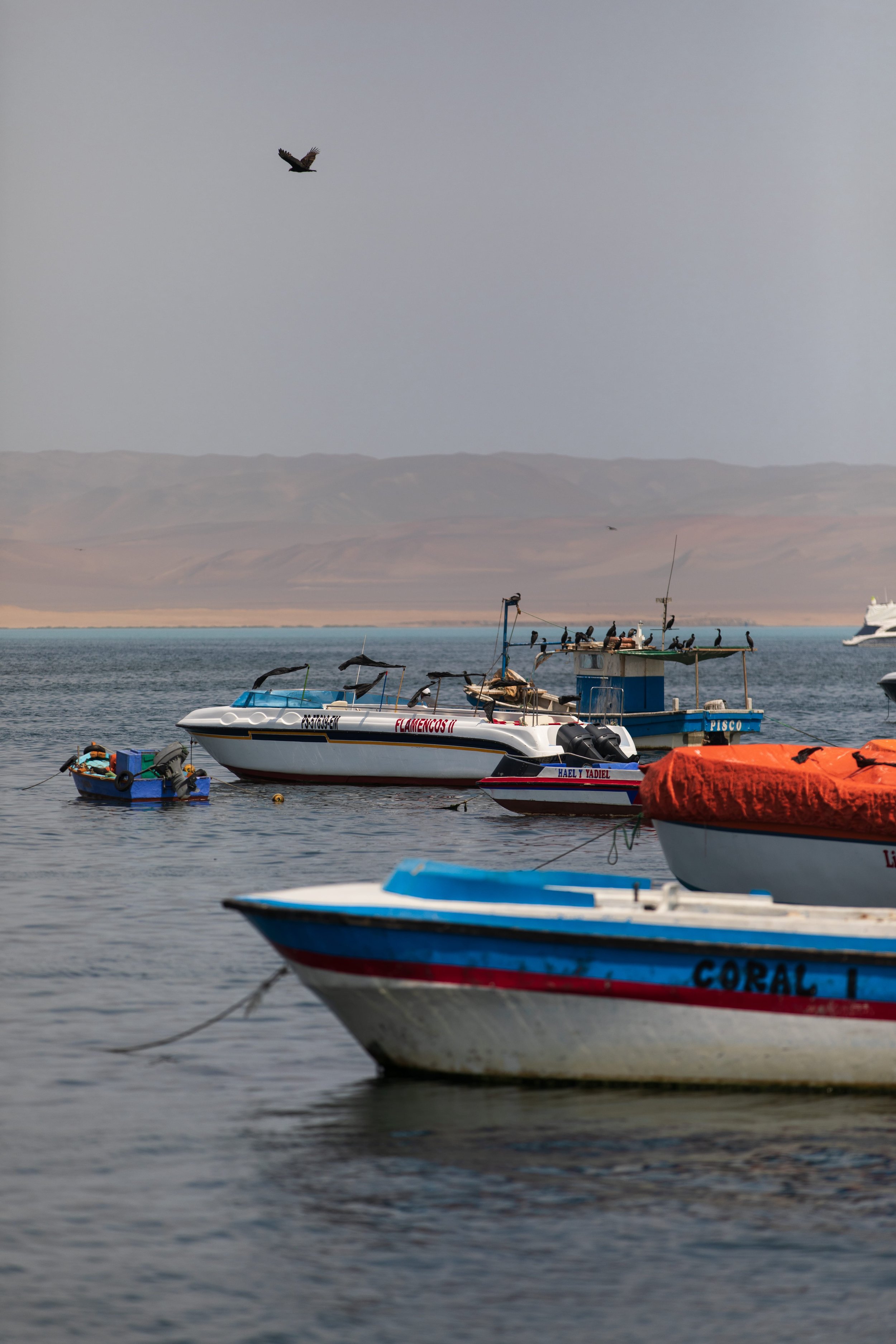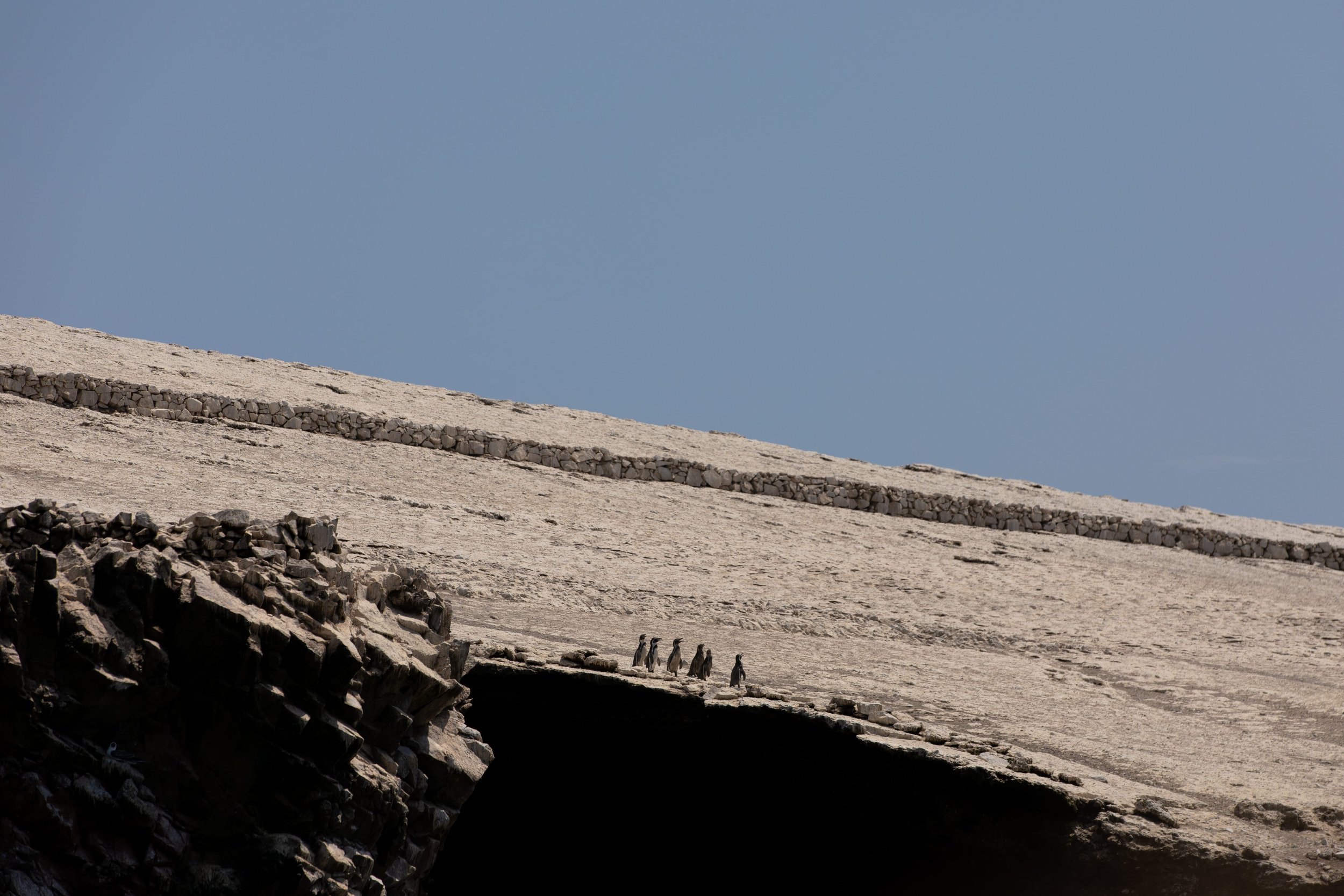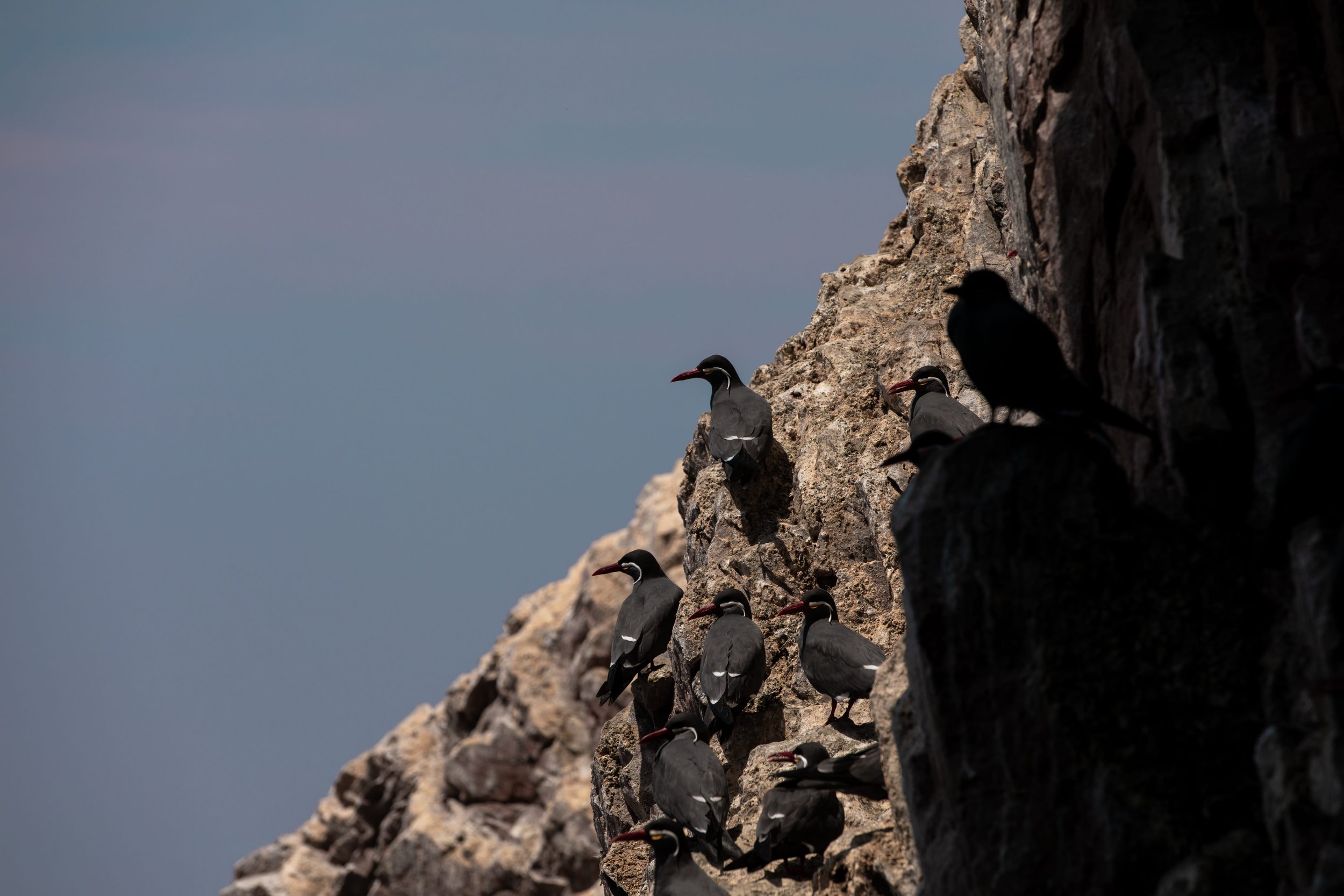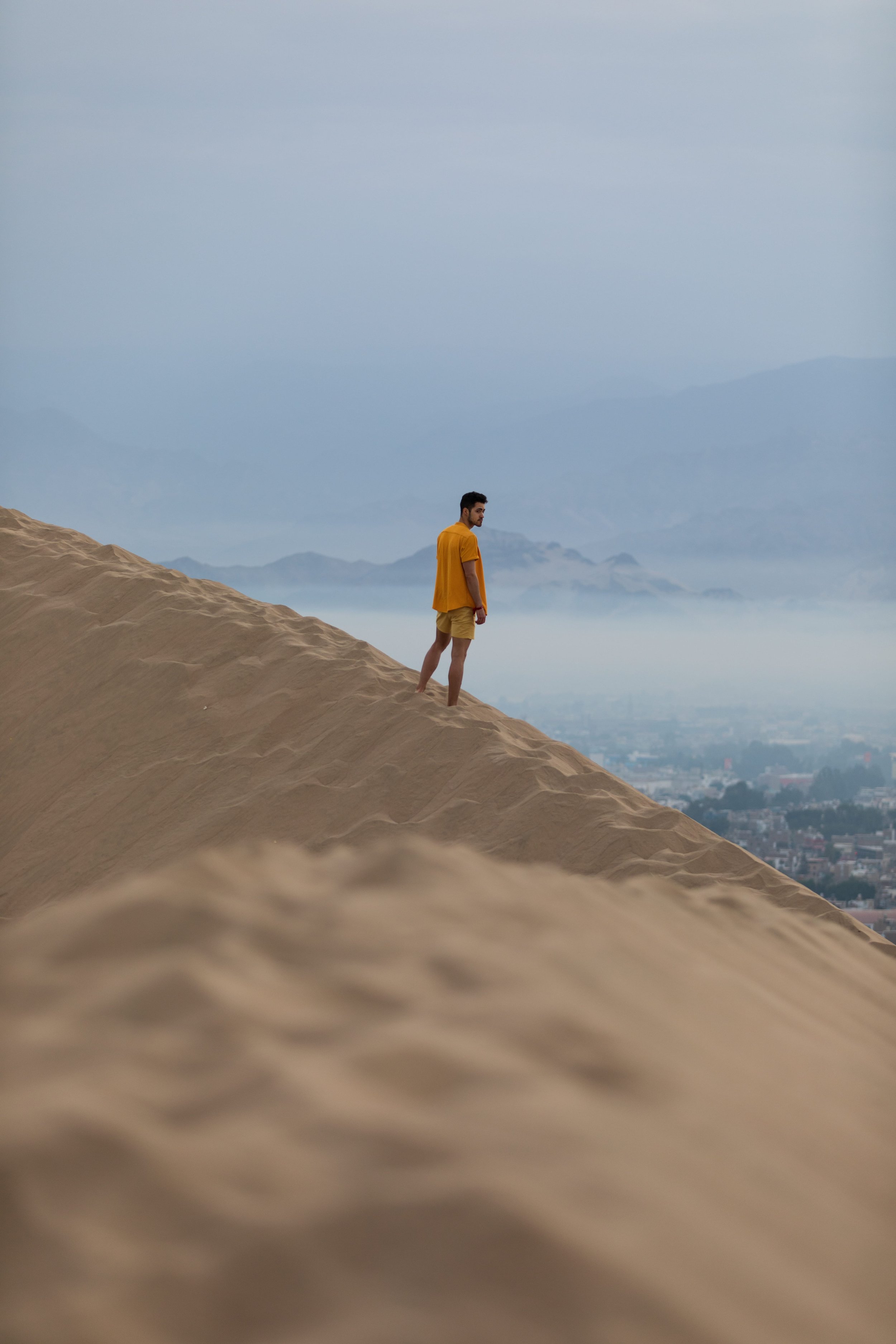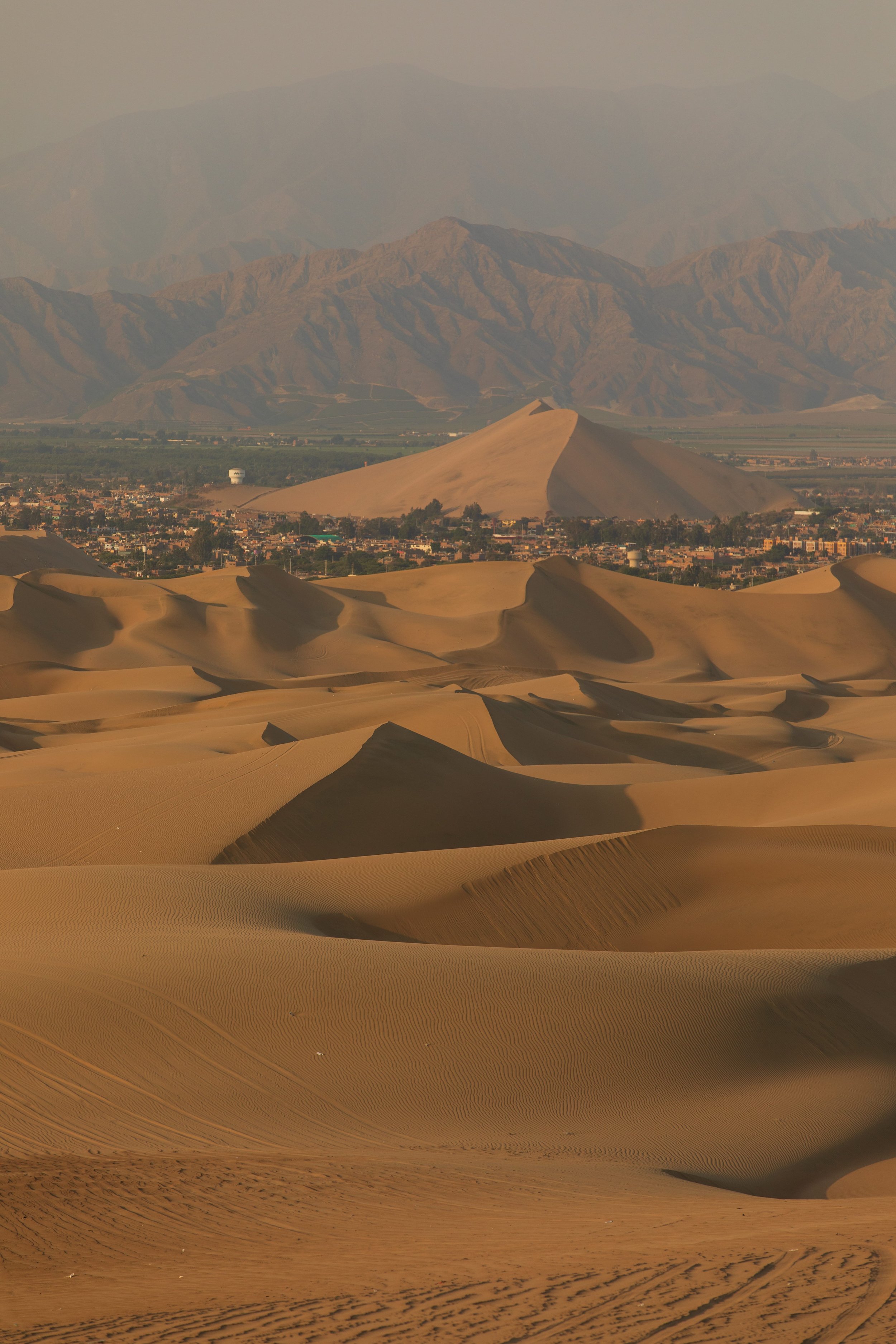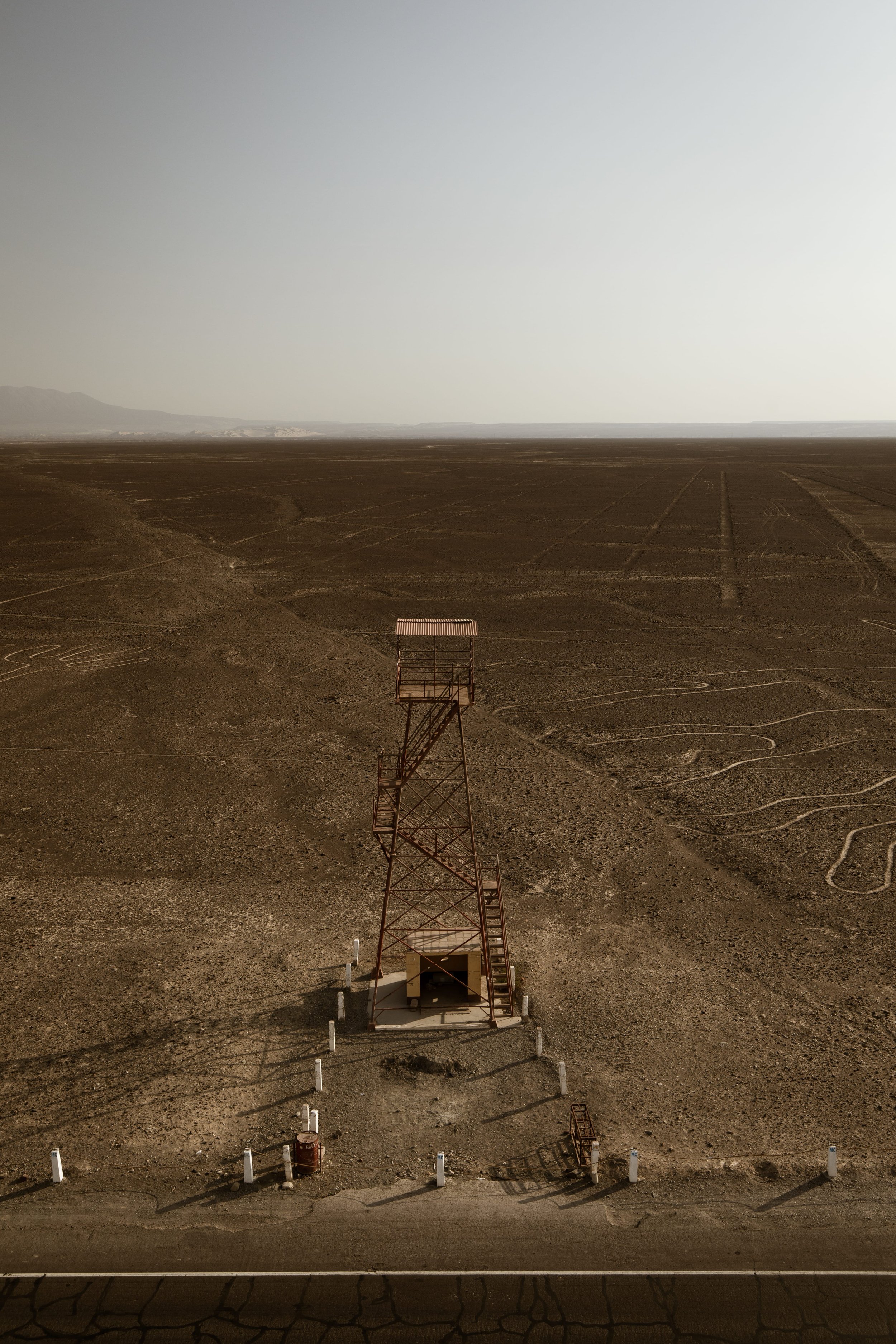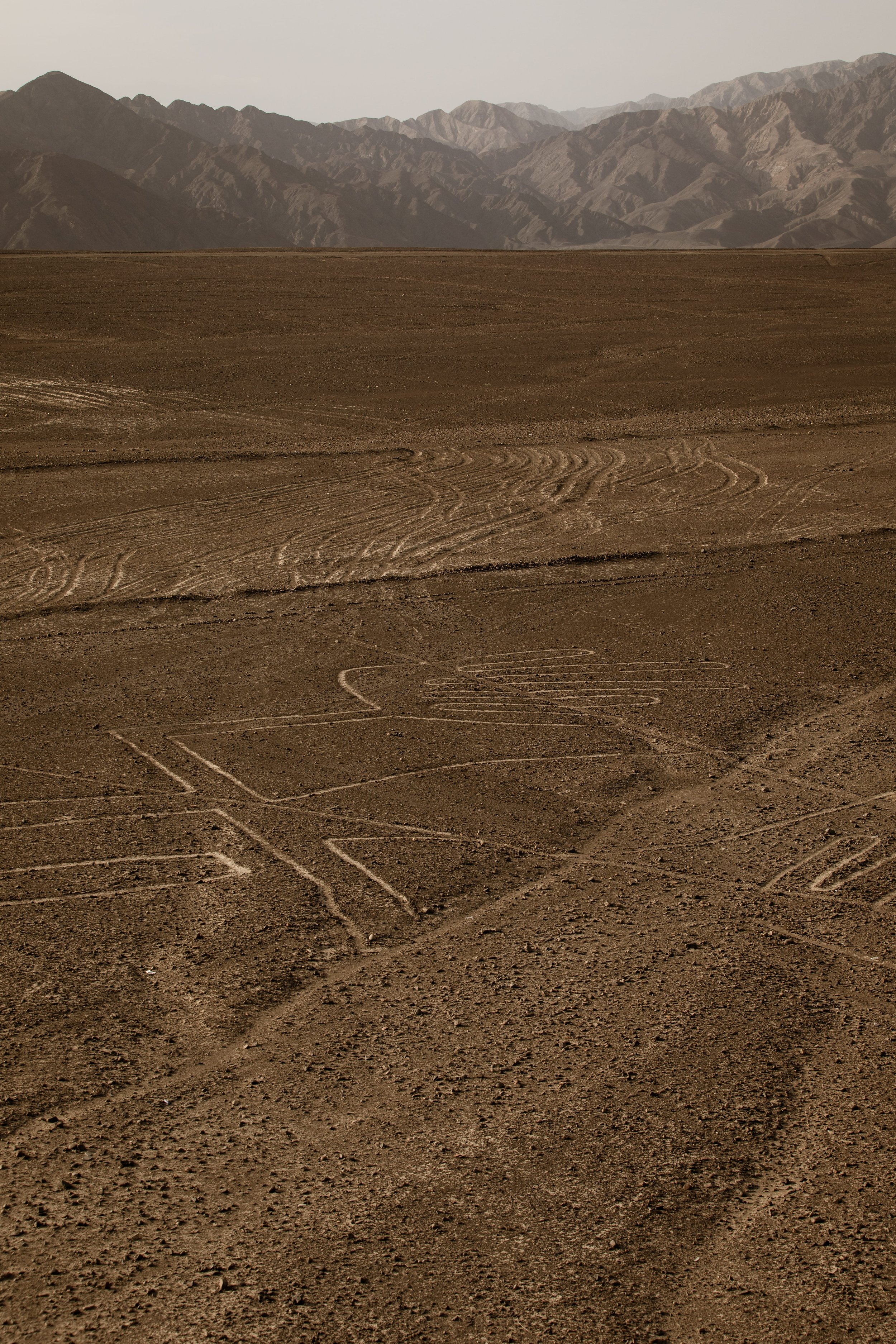9 Best Things to do in Ica, Peru
Explore Paracas National Reserve
Paracas is a small coastal town in south-west Peru, and another major tourism hotspot in the region of Ica. To get from Lima, it’s a 3h30min drive south along the same road that leads to Ica and Huacachina. Paracas is part of the Paracas National Reserve, which is often referred to as Poor Man’s Galapagos, providing some of the wildlife and sightseeing opportunities found at the real thing, but at just a fraction of the price.
Paracas is most famous for Islas Ballestas, a small archipelago just off the coast, that is bursting with wildlife. But you can also explore the area on land, as part of a group/private tour, or by cycling. A tour would normally last up to 2h, and you would travel around the southern side of the peninsula and make short stops at the various viewpoints and beaches. You can also explore the area at your own pace by renting a bike - this can take several hours more, so you should plan accordingly. The wildlife on the islands is a lot more abundant, but the reserve has much to offer in terms of scenery, and, if you go at the right time, you may also spot flamingos around the beaches just south of the town. Check my map of Peru for points of interest.
We visited Paracas on the way to Huacachina with Peru Hop, and did not spend the night there, which meant we only had a few hours in Paracas. A Peru Hop pass includes a free tour of Paracas National Reserve (at either 10:30 or 14:00), while the Ballestas Islands tour is a paid extra (at either 08:00 or 10:00). Because of the time limitation, we had to choose only one of the two, and we went for Islas Ballestas. Looking back, I think we made the right choice, but if we had more time, I would have loved to get to explore more of the reserve.
The entrance fee to the reserve is 11 Soles per person, which you pay in cash at a checkpoint. If you are visiting both the peninsula and the islands, you only need to pay this once during your stay, so hold on to your ticket.
Take a boat tour to Islas Ballestas
A boat tour to Islas Ballestas is the main reason people come to Paracas. This small archipelago is home to sea lions and many species of birds - Humboldt penguins, turkey vultures, boobies, pelicans, cormorants, to name a few.
Tours usually take place in the morning, and last up to around 1h40min, including the transfer time. Since it involves a speedboat, the tour is weather dependent. Because Paracas is one of the driest areas in the whole of Peru, rain is almost never an issue, but it can be too windy.
We organised our tour through Peru Hop and paid 19$ per person, including the port tax and entrance fee to the reserve. The boat departs from the main pier at Paracas Beach and takes about 30min to reach the archipelago. Because the islands are protected, the boat does not make any stops on shore. You will be on the boat the entire time, but there are many opportunities to see the wildlife up close. If you are into photography, don’t forget your telephoto lens, it will prove very useful.
On the way, and on your left, look out for the Candelabra geoglyph. This is a large-scale carving of mysterious origins, much like the ones at Nazca. Once at the islands, the boat will navigate around the shores, slowing down and turning around so that everyone gets a good view of the scenery and wildlife. Having sat on the right side of the boat, I felt that the left was still better positioned most of the time - so go sit on the left side!
It’s certainly worth visiting this part of Peru, to see Paracas and Huacachina. But I probably wouldn’t recommend it for Islas Ballestas alone, because there is a very similar spot just off the coast of Lima - Islas Palomino. If you are short on time, that may be the perfect alternative, as it is so easily accessible from the capital. And while Islas Ballestas are much more popular with tourists, Islas Palomino are in some ways better. The landscape is more dramatic, and the sea lion element is a lot more spectacular. You can even go and swim with them!
For either boat tours bring a light waterproof jacket, it gets windy in the open sea. Not only that, but, depending on where you stay in the boat, you might get soaked on the way to/from the islands.
Spend the night in the Huacachina Oasis
Huacachina is another highlight of the region of Ica in south-western Peru. It is a small village located just outside of the city of Ica, built around a small lake and surrounded by tall sand dunes. It’s a really nice place and they say that Huacachina is the only natural oasis in the whole of South America.
Huacachina can be visited on a day-trip from Lima, but I would strongly recommend spending the night in the oasis. It’s a 4h drive to get there from the capital, so a day trip is going to be a very long day. This gives you more time to explore the area, especially around sunrise and sunset when the desert is most beautiful. This tiny village is also known for its vibrant nightlife, with plenty of bars and party hostels attracting young crowds from all around. Whether you want to have fun or just relax, Huacachina is a good place to be in for a night or two. And rather than returning to Lima, consider continuing the journey west towards Arequipa - it’s worth it.
The village of Huacachina is very touristic. It’s basically a cluster of hotels, hostels, bars and some pretty average restaurants, with a lake in the middle. However, it is a really unique place in Peru, with stunning natural surroundings, and comes with some really fun activities. You could also base your stay in the nearby city of Ica, but since you’d be spending most of your time in Huacachina, it’s better to stay there instead - there are many accommodation options in the oasis at affordable prices. In terms of getting there, we used Peru Hop to travel from Lima to Huacachina and beyond, and they drop you right at the edge of the village.
We stayed one night at Banana’s Adventure Hotel and can recommend them.
Climb a sand dune
As one would expect, the oasis looks best seen from somewhere high up. And the tall sand dunes surrounding Huacachina provide the perfect viewpoint to admire not just the village, but also Ica, the mountains, and the endless desert.
The walk from the southern part of the village, to where the dune buggies are, and then up along the dune to the north of the village is a good route, though you could approach the viewpoint in a number of ways. It’s a short journey to the top, but the hike is maybe a bit more challenging than it looks - which is usually the case with sand dunes. At the very top, an amazing view awaits, with something interesting to look at in all directions.
Ride a dune buggy
Dune buggying and sandboarding are two very popular activities in Huacachina - these usually come together as part of the same tour.
We booked this through Peru Hop, and it cost 19$ per person for a 2h tour. But there are many operators out there, and your accommodation could easily book this for you - prices should be somewhere in the range of $20-$25 per person. The tour started at 16:00, which I think is ideal, because you also get to watch the sunset in the desert (this usually happens around 18:00 throughout the year).
A dune buggy is an open-air vehicle with large wheels, specially designed for driving over sand dunes. The buggy can accommodate around 8 people and is fitted with seatbelts and a roll cage for safety. It looks like something out of Mad Max. An experienced driver will take you at high speed up and down sand dunes. It’s a wild ride and it feels like a rollercoaster through the desert, but the drivers seem to really know what they are doing. You also get to stop along the way, either to admire the scenery or go sandboarding.
Try sandboarding
Sandboarding in Huacachina goes hand in hand with the dune buggying, and it is just as fun.
The only downside is you most likely get to try this only 1-2 times as part of a standard dunne buggy plus sandboarding tour. There is just not enough time, because the sand dunes are really tall and the driver would have to either take the group up again or proceed to the next sandboarding opportunity. I could definitely have done it a few more times. If you really enjoy it and especially if you have some snowboarding experience, you might want to go for a tour with a focus on sandboarding - this would give you more time to do just that.
Sandboarding can be done either standing up or lying flat on the board. But, unless you are good at snowboarding, you really should not even try standing. You gain speed quite easily, and will most likely fall and possibly injure yourself. Lying down is easy and fun and also safe, most people will go for this option.
Where there is desert and tourism, there is sandboarding, but I felt that sandboarding in Peru was superior to the experience I’ve had in other countries such as UAE, Morocco or Jordan. The dunes in this part of Peru are steep and high, which really adds to the experience, and the dune buggies provide an easy way to try this multiple times without having to walk all the way back up. And you can even try sand skiing!
Watch the sunrise or sunset
The desert landscape is most impressive around sunrise and sunset times, when the light if softer and the golden colour of the sand is most vibrant - and this is also the case with Huacachina.
If you start your dune buggy tour late in the afternoon, you will most likely get to watch the sunset as part of the tour. The buggies will stop somewhere in the desert and allow visitors some time to gaze at the sun dropping below the horizon, because we all know every tourist loves a good sunset. You could also make your own way up any of the dunes surrounding Huacachina to admire the beautiful golden hour views at your own pace.
If you choose to spend the night and don’t mind waking up very early, then you could also go for a sunrise walk. We climbed up the tall dune next to the village and even though the sun was hiding behind the clouds, the scenery was stunning.
Go on a pisco or wine tour
The region of Ica is the home of pisco, and provides great oportunities to sample Peru’s national drink and learn about the process of making it at one of its many distilleries. And where there is pisco, there is also wine (since pisco is just a type of distilled wine). You can try pisco all around Peru, and you should. This usually comes in the form of a Pisco Sour cocktail, which might be my new favourite drink after visiting Peru. But a visit to Ica would feel incomplete without some kind of pisco/wine tasting experience.
Our Peru Hop pass from Lima to Arequipa included a free pisco vineyard tour, though personally I was quite disappointed in our experience. Based on reviews, I think the tour sometimes takes place at El Viejo Catador, which seems like the better option, but instead we ended up next door at Bodega Nietto. There was no tour at all, we just sat and sampled some of their product, which any potential customer could just do if they asked. The drinks were nice, but the experience felt quite cheap and touristy. The lunch at their restaurant was not particularly impressive either. We might have just been unlucky, but I am sure there are pisco/wine tours out there that would be more informative and feel more authentic.
On your journey from Lima to Ica, as you approach Paracas, you will pass by a city called Pisco - though you won’t actually see it from the highway. Back in the day, this was be the main port where the famous drink was being distributed along the South American coast and even further.
See the Nazca Lines
Nazca is one of the most important archaeological sites in Peru, and over the years it has drawn interest from scientists and archaeologists from all over the world. Still, their exact origins and purpose remain a mystery to this day.
The Nazca lines are a group of lines and geoglyphs found in the Nazca desert and spread out over an area of around 50km². They are around 2,000 years old and were built by carving thin shallow trenches into the soil, which removes the upper layer, and exposes the soil underneath, of a lighter colour. As for their purpose, many theories have been put forward, covering a broad spectrum, from religion and astronomy to irrigation and aliens. A popular theory though claims that they had a religious significance, and that the Nazca people created them so that deities can see them from the sky.
Most of the Nazca lines are just straight lines, but some are interesting shapes depicting animals, plants or other things. Some examples - Spider, Condor, Hummingbird, Pelican, Heron, Monkey, Lizard, Parrot, Tree, Flower, Hands, Spiral. They are often drawn with just one continuous line. These shapes have become a symbol of Peru, and are attracting visitors from all over the world. The dry climate of the Nazca area and the protected status as a UNESCO World Heritage Site are the reason why these shapes are so well preserved despite their age.
Some of the geoglyphs can be hundreds of meters long, and since they are carved into the ground and scattered around the desert, they really have to be seen from above. So it makes sense that a flight over the Nazca Lines is the best way to see them. This is a popular 30min tour costing in the region of 100$ per person, plus the airport tax of 20$. The plane accommodates 6 to 12 passengers. Every seat has a window, and the plane turns so that everyone can see the lines, so it doesn’t really matter which side you are staying on. There is a strict weight limit of 95kg per passenger, and going over will attract the purchase of an additional seat.
This option can be done as a day tour from Paracas or Huacachina, but the transfer time is 2-3h, and so spending a night in Nazca may be a good option. They also say it’s best to do this early in the morning, due to better weather conditions and visibility. With regards to safety, there have been incidents in the past (a quick search on Google might put you off the idea), mainly due to lack of regulation, but the situation is apparently getting better. This kind of activity always involves some risk, but to put into perspective, travelling by bus in some areas of Peru is much more dangerous (Google that too).
If you don’t have the budget or time, or maybe you just don’t like small planes, there is another way to experience the Nazca Lines, that is both budget-friendly and time-efficient. Three of the well known shapes (Tree, Lizard, and Hands) are right next to the highway, and you can see those from a viewing tower. The entry fee is around 6 soles (1.5$). You can get there by bus from Nazca, and many tour operators make a stop here (including Peru Hop - which also includes the entry fee). This option is definitely a lot less impressive than seeing more of the shapes from a plane, however it still gives a good idea of what the Nazca Lines are and it’s something that can be very easily fitted into anyone’s schedule.
This post uses some affiliate links which may earn us a small commission from clicks that result in a purchase at no extra cost to you. We hope the information is useful and thank you for supporting our blog.
